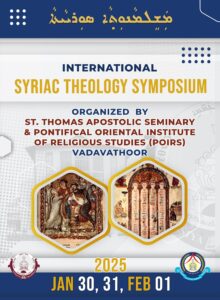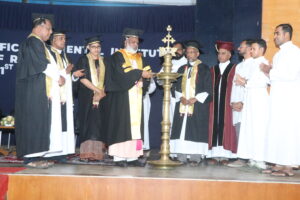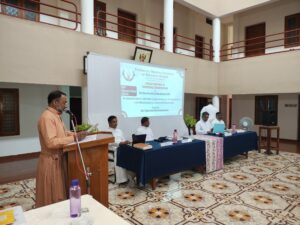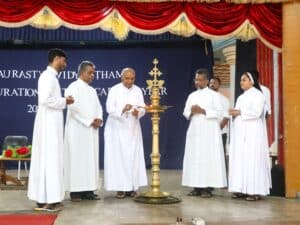Fifty First Convocation Ceremony
Fifty first convocation ceremony was conducted on January 08, 2025
Public Defence of Doctoral Dissertation by Rev. Fr. Palavilayil John Samuel OIC
Rev. Fr. Palavilayil John Samuel OIC successfully defended his doctoral dissertation titled Interdependence between Christological, Ecclesiological, and Missiological Vision of Mar Ivanios at the Pontifical Oriental Institute of Religious Studies. The defence, held in the Defence Hall, was attended by faculty members, scholars, and students, marking a significant moment in theological scholarship.Under the direction of Rev. Dr. Varghese Kochuparambil, the dissertation explored the interconnectedness of Mar Ivanios' vision of Christology, Ecclesiology, and Missiology, offering fresh insights into his contributions to the Church's understanding of its mission and identity. The candidate's rigorous analysis and theological depth were met with high praise from the examination committee.The event concluded with a vibrant discussion, highlighting the importance of Mar Ivanios' theological legacy in contemporary…
Inauguration of the Academic Year 2024-25
The Inaugural meeting of the Academic Year 2024-25 of Paurastya Vidyapitham was held on 03 June 2024 at 10.00 a.m. in the Cardinal Tisserant Hall. Rev. Dr Alex Tharamangalam, Auxiliary Bishop of the Eparchy of Thamarassery delivered the inaugural address and Rev. Dr Alex Kollamkulam presented the Schola Brevis.
PS 217 Sacrament of Marriage
Program : Program Licentiate in Eastern Canon Law Semester : Semester Second Cycle Credits : Credits 4.5 Teacher : Teacher Thekkekara George Contents Faculty of Theology Institute of Philosophy Institute of Eastern Canon Law Courses Programs
Application of Civil Law in Canon Law
Program : Program Licentiate in Eastern Canon Law Semester : Semester Credits : Credits Teacher : Teacher Thekkekara George Contents Faculty of Theology Institute of Philosophy Institute of Eastern Canon Law Courses Programs
PS 215 Penal Laws (Titles XXVII, XXVIII)
Program : Program Licentiate in Eastern Canon Law Semester : Semester Third Year Credits : Credits 3 Teacher : Teacher Thekkekara George Contents Faculty of Theology Institute of Philosophy Institute of Eastern Canon Law Courses Programs
- 1
- 2
- 3
- 4
- …
- 15
- Go to the next page






